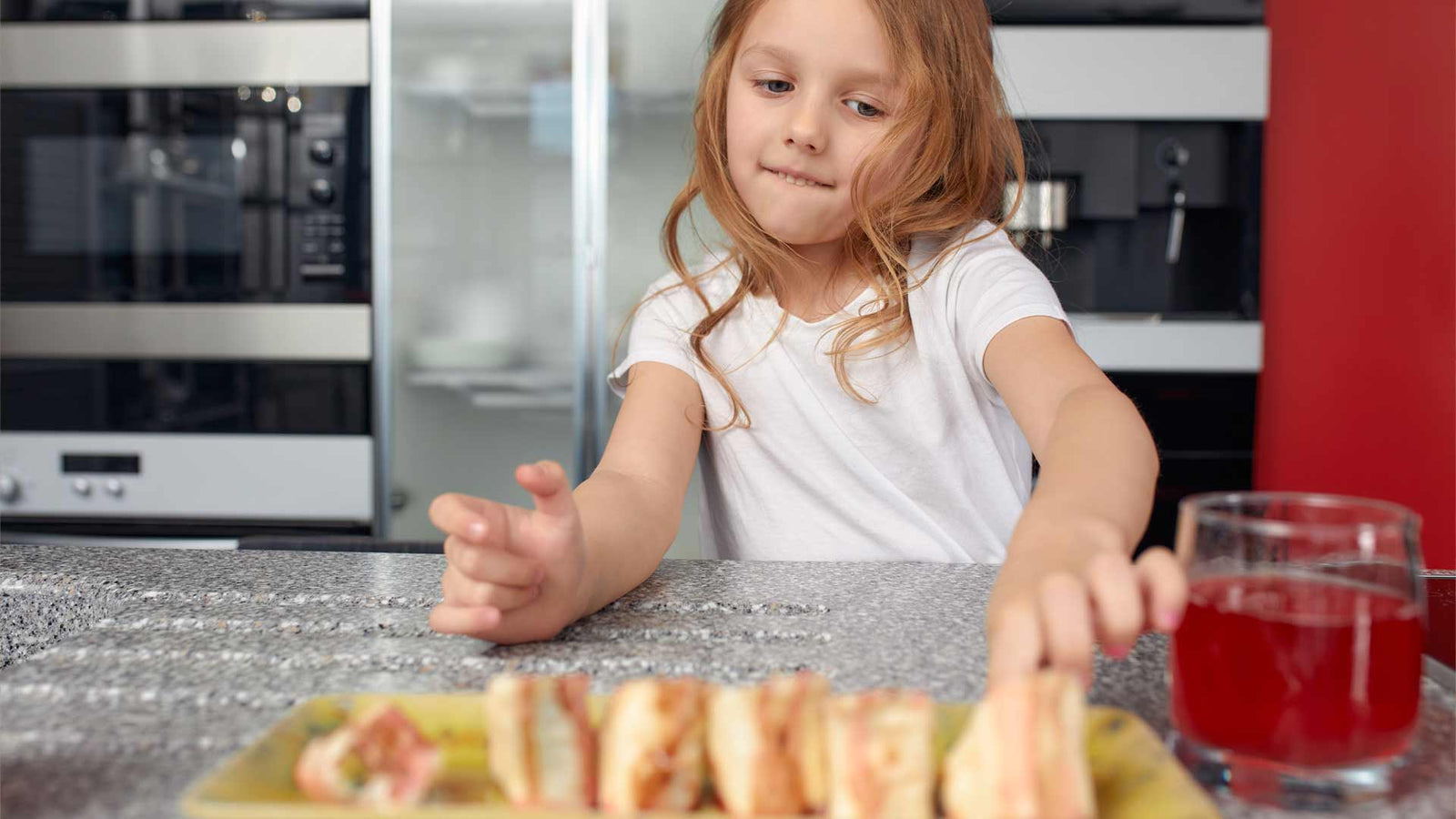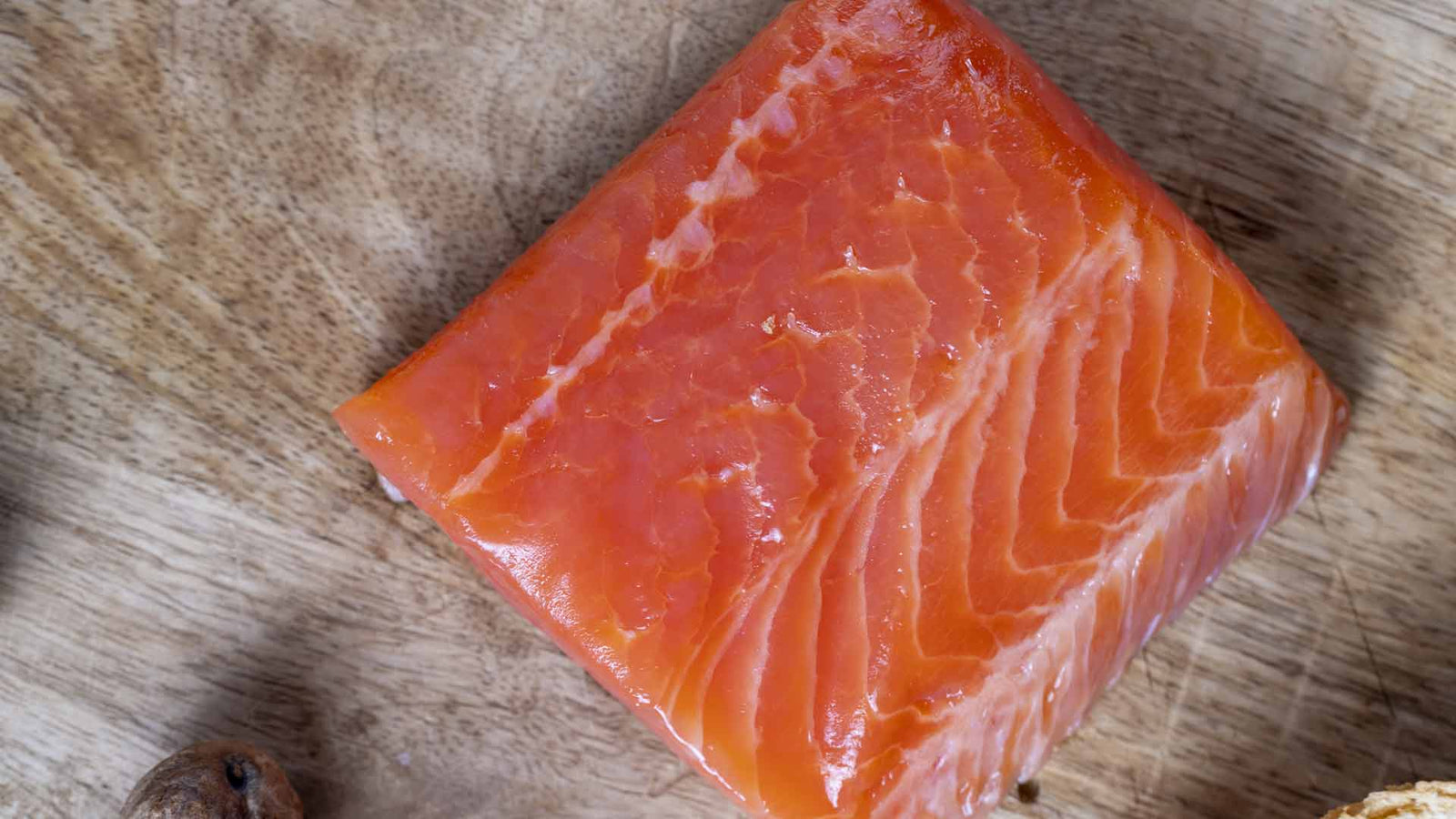
Salmon can be offered as soon as your baby is ready to begin solids, usually around 6 months. When providing fish to your infant, it is critical that the fish is fully cooked (and never provided undercooked or raw, as in sushi) and that you avoid serving cured, dried, salted, or smoked fish (such as gravlax), which all contain significant amounts of sodium. Excess sodium can condition your baby's palate for salty foods, increase the chance of obesity, and increase the risk of hypertension, which can lead to heart disease and stroke later in life.
Salmon is low in mercury, high in omega-3 fatty acids, and an excellent fish for newborns and adults compared to tuna and other popular fish.

Our oldest, and she loves to eat cooked salmon skin. Did you know that the skin contains high concentrations of Omega-3, vitamin B, vitamin D, and minerals like Niacin and Phosphorus?
Is salmon suitable for infants?
Yes, but only in moderation. Salmon contains various minerals that babies require to survive, including vitamin D (which is frequently lacking in babies), iron, selenium, and zinc.
Salmon is also a good source of omega-3 fatty acids, such as DHA, which make up a significant portion of a baby's brain and are essential for visual and cognitive development.
When shopping for salmon, aim for wild-caught Alaskan salmon as it is low in contaminants.
Wild AlaskanCoho andSockeye are the bestwild Alaskan salmon kinds.
Canned fish can be heavy in salt, which is bad for newborns and adults alike when consumed in excess, and BPA is a chemical used to line the interior of cans and pouches that can disturb your baby's hormone levels and physical functioning.
Is salmon a well-known allergen?
Yes. Finned fish, such as salmon, is a majorfood allergen. Nonetheless, only about 1% of Americans are allergic to finned fish. As with any new food, begin by serving a small amount at first and watching your baby closely as they eat. If no adverse reactions occur, gradually increase the amount over subsequent servings. Consult an allergist before introducing seafood at home if you have a family history of allergies or suspect your baby may be allergic to fish.
How to serve salmon to babies?
There are several ways to prepare salmon for the different age groups of babies.
6 to 12 months old: When serving fresh salmon, make sure to remove all of the bones and fully cook it. You can give your baby cooked fish pieces the size of two adult pinky fingers together. This size is not only a safe amount for your baby to consume but also more accessible for babies to grasp than small flakes of fish. If you choose to flake the fish into other dishes, serving it in a bowl that suction cups to the table will make hand-scooping easier.
12 to 18 months: Serve fresh (cooked, deboned, skin removed). Salmon can be served in bite-sized pieces, cakes, patties, or salmon salad at this age. You can also continue to serve the longer salmon fillet strips for biting and tearing practice. To make a salad, combine the salmon with mashed avocado, mayonnaise, olive oil, or yogurt.
18 to 24 months: While your toddler's food preferences develop, focus on fresh salmon. Serve it flaked on its own or mixed into other foods, with the fork preloaded as needed. You can add smoked salmon or gravlax if you want, but it's best to avoid cured and smoked fish because it's incredibly high in sodium.
We know how babies are, and that Wild Alaskan salmon is best for them. We are a family-owned business, and our two kids have been raised by eating wild salmon.
You can buy the premium Wild Alaskan fish here at theonline store.

